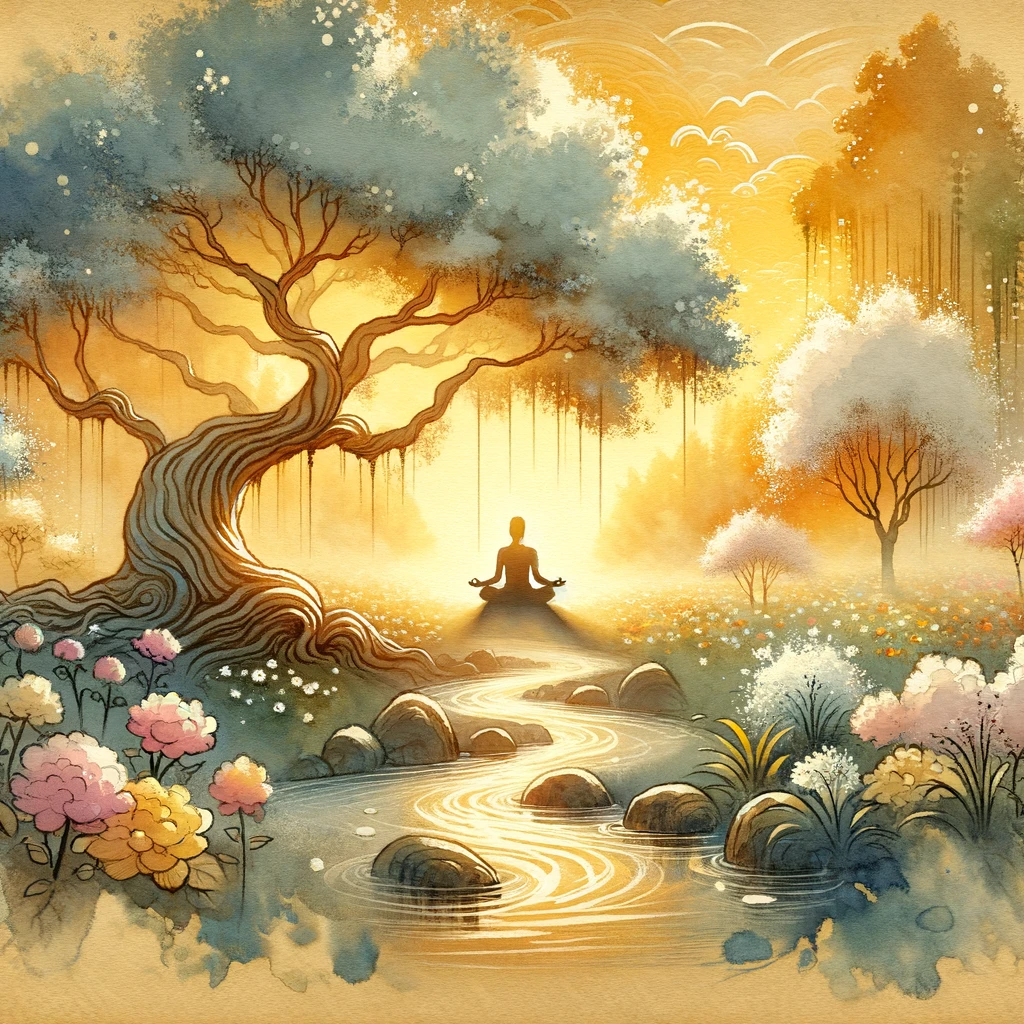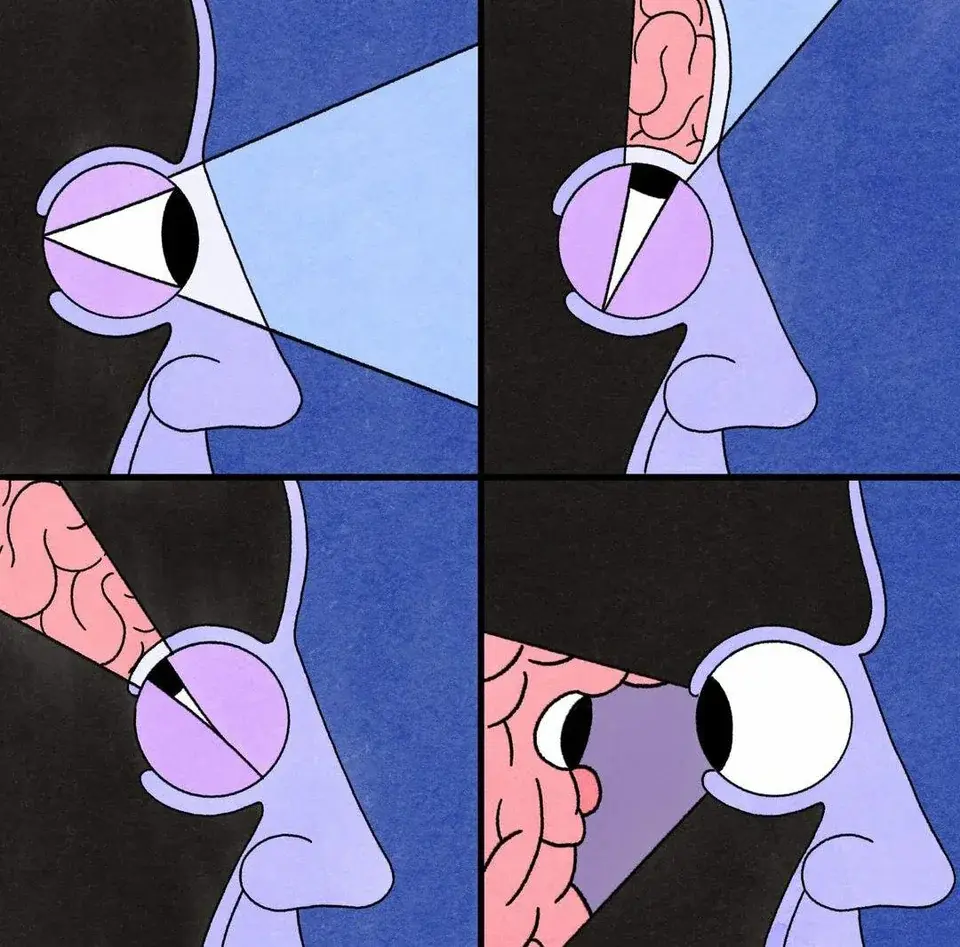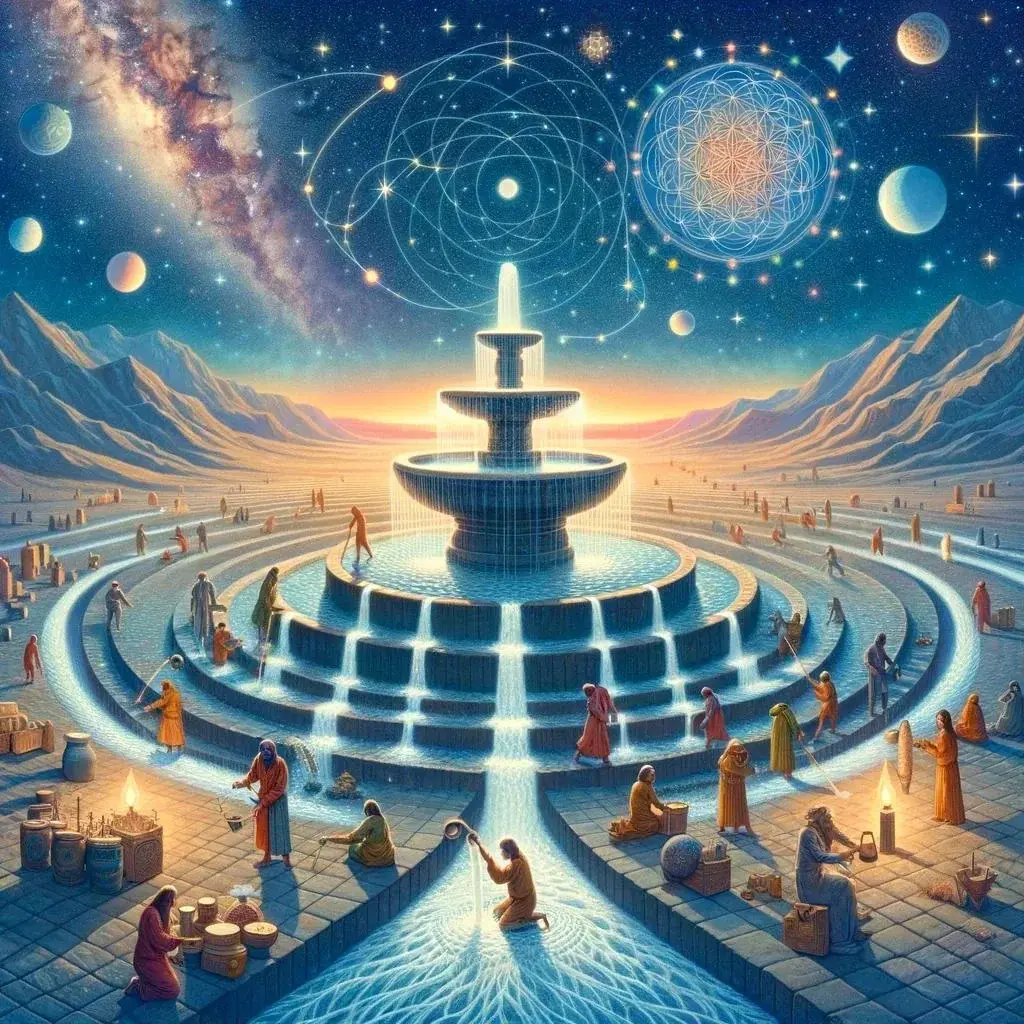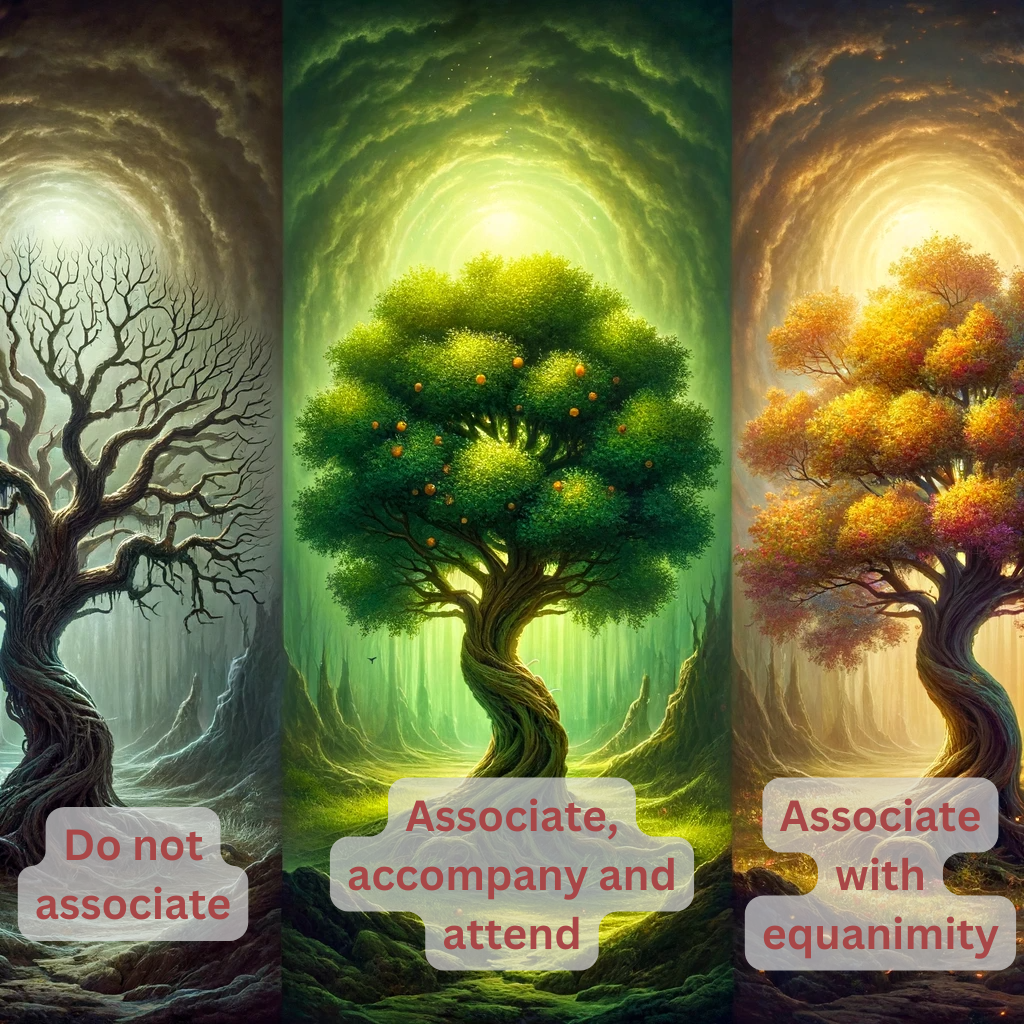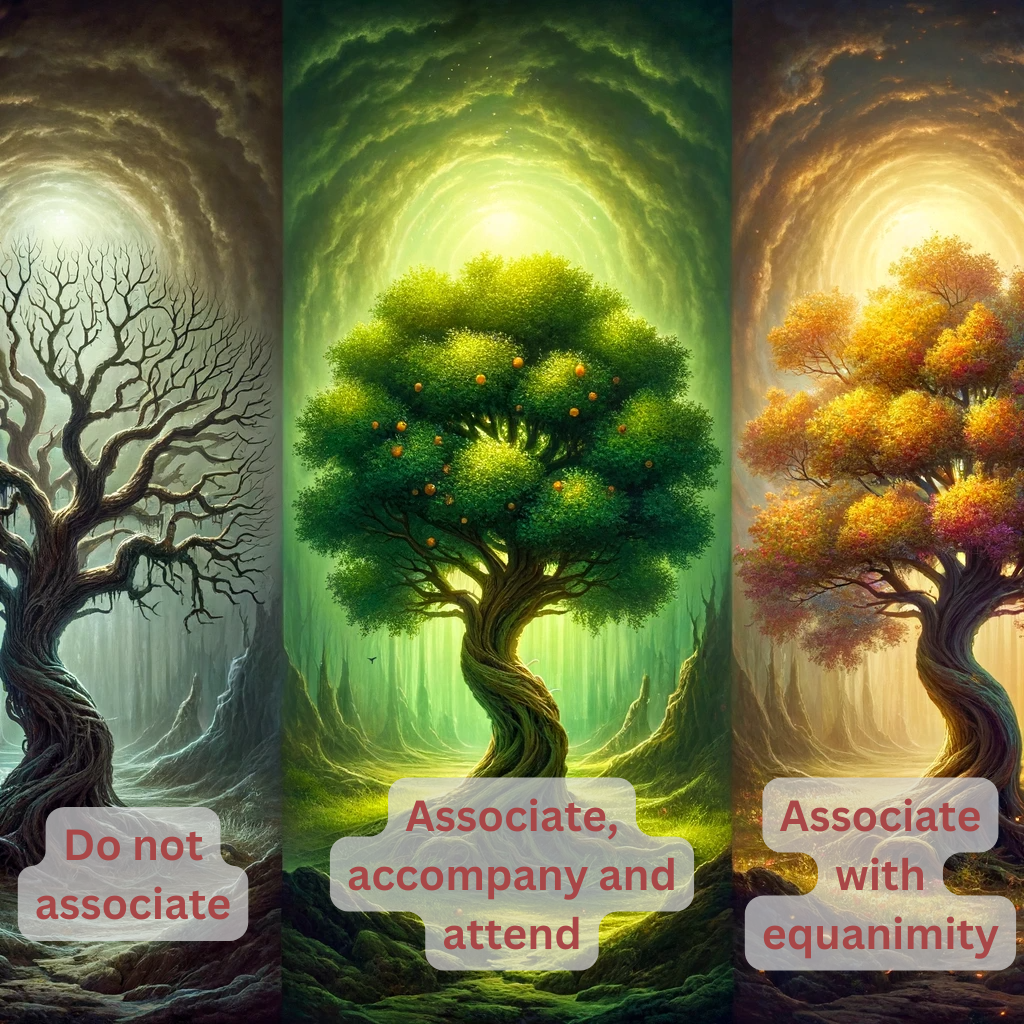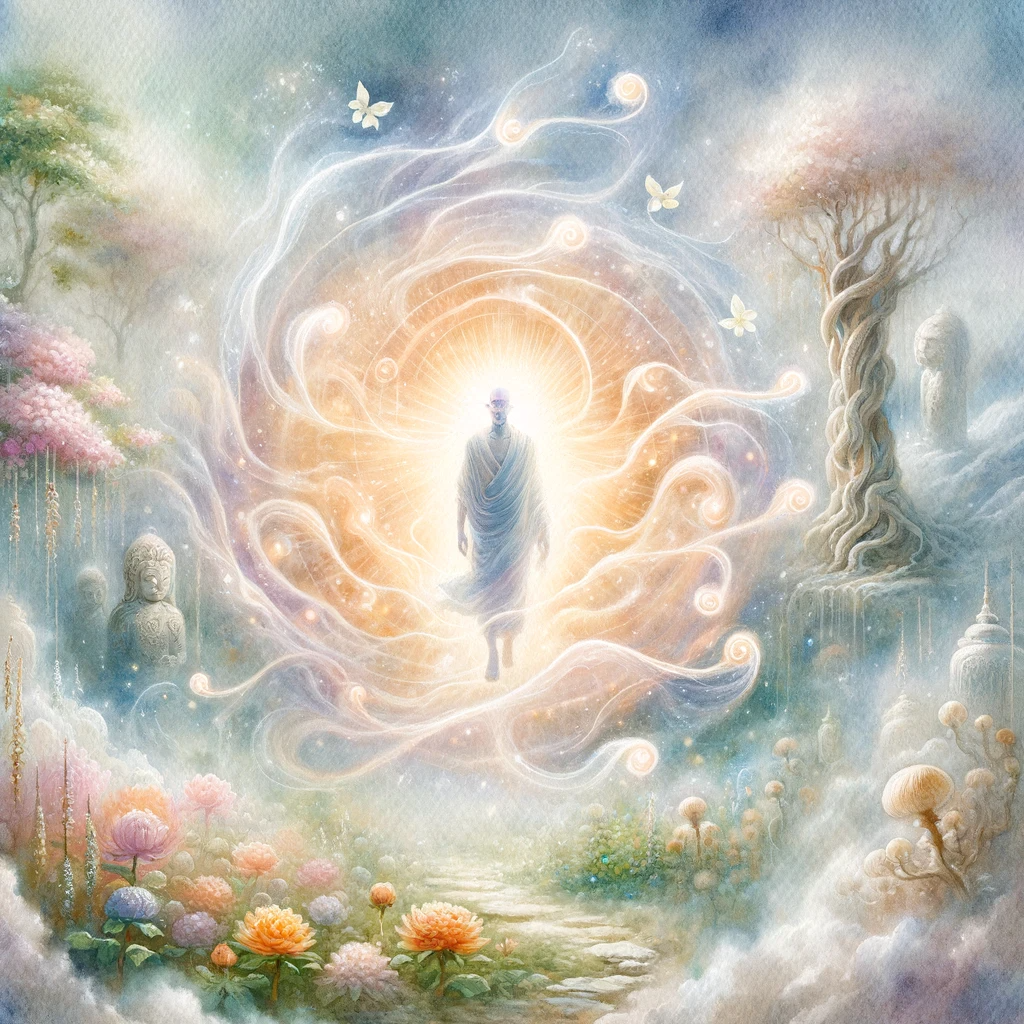The truth of Nibbāna is fundamental to the Buddha's teachings and also what one awakens to (stream entry) as well as the end goal of the teachings (arahantship). In this post, I will share an approach for cultivating faith in this goal by making a case for the verification of Nibbāna using recent modern science.
To understand the truth of Nibbāna, I will start out with a complete presentation of the four noble truths in a way that they can be apparent in the here and now with applied reflection. After this, I will make a case for the verification of Nibbāna via modern science, and at the very least, a strong signal that should move the needle towards cultivating faith for some of us that are on the fence. And perhaps, this can serve as a springboard for some of us to dedicate more of our time to gradually learn the teachings of the Buddha and independently verify the truth for ourselves, going beyond doubt.
The Four Noble Truths
1. The truth of discontentment: The feelings of each moment to moment experience are subject to discontentment. The form, perception, volitions, consciousness (together the five aggregates) of each moment to experience are subject to discontentment.
The First Noble Truth titled, “the noble truth of discontentedness”, establishes “the problem” with the unEnlightened mind through an understanding of The Five Aggregates.
The Five Aggregates are what makes “a being, a being”. A living being will have all five aggregates, also known as “elements” or “collections”.
The Five Aggregates
Form: the physical body.
Feelings: results of experiences in the mind through The Six Sense Bases.
Perceptions: a belief or opinion based on how things seem.
Volitional Formations: choices or decisions that are made.
Consciousness: the mind.
It is when the mind “clings” or “holds on” to The Five Aggregates that the mind experiences continued discontentedness. Observing the impermanent nature of The Five Aggregates, a human being can “let go” no longer experiencing discontentedness due to “holding on” to The Five Aggregates experiencing constant rebirth in The Cycle of Rebirth.
Due to clinging to The Five Aggregates and a being coming into existence, the mind will experience discontentedness.
All unEnlightened beings will experience discontentedness.
Let's take the feelings aggregate to verify this in the here and now: painful feelings such as anger, sadness, anxiety, frustration, ill-will, jealousy, or neither-painful-nor-pleasant feelings such as shyness, boredom, loneliness, discomfort, melancholy are subject to discontentment. However, the Buddha also shares that the pleasant feelings such as excitement, happiness, elation, thrill, euphoria etc. are no exceptions and also subject to discontentment. We can perhaps see the truth of this through the understanding of these conditioned pleasant feelings lacking permanence. Do you often think about that "peak experience" in your life? There you go, that's the verification of the first noble truth for the feelings aggregate. With some more reflection, this can be seen for the other aggregates too.
2. The truth of the cause of discontentment: It is the underlying craving for renewed existence, accompanied by desire or lust, seeking excitement here and there, that is craving for sensual pleasures, craving for existence and craving for extermination.
The second noble truth explains the underlying cause of why the mind experiences discontentedness.
It is craving/desire/attachment that causes the mind to experience discontentedness.
Craving/Desire/Attachment/Wants/Expectations/Grasping/Holding/Clinging: a mental longing for something with a strong eagerness. The mind pulling in a direction for objects of its affection.
The Buddha provides specific cravings that the unEnlightened mind will experience. It is “craving which leads to renewed existence”. Not only does craving cause discontentedness but craving is the fuel that leads to rebirth. If there is craving/desire/attachment in the mind, a being will experience rebirth.
The unEnlightened mind will seek pleasant feelings chasing after the objects of its affection. The Buddha explains this as craving that is “accompanied by excitement and desire, seeking excitement here and there; that is craving for sensual pleasures”. The unEnlightened mind will pull in the direction of the objects of its affection and if it gets what it “wants”, the mind experiences temporary pleasant feelings. If the mind does not get what it “wants”, it will experience painful feelings. Many times the mind does not know what it “wants” and will experience feelings that are neither painful-nor-pleasant.
Craving/desire/attachment keeps the mind in a continuous cycle of discontentedness never being able to find peace or be at ease because it is constantly chasing after something experiencing pleasant feelings, painful feelings, and feelings that are neither painful-nor-pleasant.
The Buddha further explains how the mind has “craving for existence” which is a mental longing with a strong eagerness to exist in the world. With the mind holding on to existence, a being will continue to experience discontentedness and discontentedness in future existences within The Cycle of Rebirth due to the craving/desire/attachment in the mind for continued existence. If there is birth, there is going to be discontentedness.
The mind also can have “craving for extermination” or death. This would be a being who is interested in death through suicide or other destructive conduct. If the mind has craving/desire to eliminate life, the mind is not in the middle and will experience discontentedness and rebirth due to this craving.
All craving/desire/attachment will produce discontentedness in the mind. There is no such thing as a wholesome craving/desire/attachment.
3. The truth of the cessation of discontentment: There is a cessation of discontentment. It is the remainderless fading away and elimination of the same craving, the giving up and letting go of it, freedom from it, non-reliance on it.
Through training the mind to eliminate mental longing with a strong eagerness, the mind can reside peaceful, calm, serene, and content with joy because it is no longer seeking pleasant feelings through impermanent conditions and, thus, welcoming in painful feelings and feelings that are neither painful-nor-pleasant. Instead, the mind is trained to be inwardly peaceful and content or “satisfied with what is”.
The Buddha explains the elimination of discontentedness as “it is the remainderless fading away and elimination of the same craving, the giving up and letting go of it, freedom from it, non-reliance on it”.
Through training the mind to eliminate craving/desire/attachment, the mind can reside peaceful, calm, serene, and content with joy - permanently. Through training the mind to no longer chase after the objects of its affection, it can find inner peace no longer experiencing conditioned temporary feelings that are unsatisfactory. Instead, the mind can experience unconditioned mental qualities such as peacefulness, calmness, serenity, and contentedness with joy.
The inner feelings of the Enlightened mind are not based on impermanent conditions but instead, the mind is always peaceful, calm, serene, and content with joy not based on temporary conditions. This is accomplished through training the mind to eliminate craving/desire/attachment as described in this entire book series.
Through training the mind in this way, the mind can eliminate 100% of all discontent feelings.
4. The truth of the way of cessation of discontentment: It is the noble eight fold path: namely right view, right intention, right speech, right action, right livelihood, right effort, right mindfulness, and right concentration is the way that leads to the cessation of discontentment.
This last noble truth shows the path to verify the third truth. It is The Eight Fold Path that provides the complete and perfect solution for how to actively train the mind to eliminate 100% of all discontentedness. While craving/desire/attachment is the cause of the problem and the solution to eliminate discontentedness is to eliminate all craving/desire/attachment, there is an entire path one needs to learn, reflect on, and practice to liberate the mind from discontentedness.
The Buddha explains this as “it is this Noble Eight Fold Path, that is, Right View, Right Intention, Right Speech, Right Action, Right Livelihood, Right Effort, Right Mindfulness, Right Concentration”.
The Four Noble Truths is the primary core Teaching that establishes Right View helping a Practitioner to examine the problem, cause of the problem, solution to the problem, and the path leading to the complete elimination of the problem. It is The Eight Fold Path that is the central Teaching of The Buddha with the vast majority of his Teachings integrating into The Eight Fold Path in one way or another.
It is through learning, reflecting, and practicing The Eight Fold Path that the mind is trained to be able to completely eliminate all unwholesome decisions that motivate unskillful conduct that leads to unwholesome results. Through training the mind in The Eight Fold Path, it is transformed into making only wholesome decisions that motivate skillful conduct that leads to wholesome results.
Verifying in the here and now
The first two truths can become readily apparent in the here and now or with some reflection on your experiences. However, verifying the cessation of discontentment requires building a life practice of the noble eightfold path. You can verify the 3rd truth by way of verifying the 4th truth, and this typically requires one to commit to building a life practice. Depending on how much farther our current life routine is from the Buddha's prescribed way of being in the Noble eightfold path, setting out to verify the 3rd and 4th noble truths may require a stronger faith than we currently hold -- to commit ourselves to doing the necessary work.
In this post, I'm sharing another way to verify the 3rd noble truth -- through the mode of science. The verification / demonstration is of the same quality as the one we hold in Einstein's (E = mc²) equation being true while not having to chance to verify it on our own. While science did not exist during the time of the Buddha 2500 years ago, the Buddha emphasized on the discovery of truth via a reasoned critical inquiry, vy direct observation and independent verification, in much the same way that modern science advocates for. You can read his exact words and teaching on the topic of truth over here: https://www.reddit.com/r/WordsOfTheBuddha/comments/1893o1o/canki_sutta_preservation_of_truth_awakening_to/.
The Buddha also had a clear position on what are insufficient grounds for building faith. He shares 10 conditions that one shouldn't rely on for the discovery of truth. You can read his exact words and teaching in this post: https://www.reddit.com/r/WordsOfTheBuddha/comments/18adf05/kalama_sutta_importance_of_inquiry_and_personal/.
Verifying The Noble Truth of Cessation with Modern Science
Coming to Modern science: being this democratic body of work that allows for universal participation for the discovery of new truths, building on them, allowing for course correction, and being based in empiricism - has emerged as a strong currency for truth in the last five centuries. The science a kid living in Middle East studies is the same science that the rest of the world studies.
As Carl Sagan puts it:
"Science is a way of thinking much more than it is a body of knowledge."
The Science of Cessation
A paper published in April 2023 documents a subject demonstrating cessation of perception and feeling for a duration of 90 minutes under the bright lights of a modern science lab. The subject undergoes consciously shutting down their mind and self to a state where they experience no thoughts or feelings and can't be woken up from akin to an anesthesia. Except the meditator can consciously induce it and with training, stay in this state for a pre-determined duration lasting up to 7 days. This physically observable characteristic makes it possible to study this state and human physiology scientifically.
Here is the link to the paper https://pubmed.ncbi.nlm.nih.gov/37714573/ + https://www.sciencedirect.com/science/article/abs/pii/S0079612322001984?dgcid=rss_sd_all. This and other recent research studies are opening a gateway to help humanity better understand the science of consciousness and brain.
Here is a video conversation with the subject of the study and the scientist who was part of the research team conducting the experiment explaining the details of the study and its implications: https://www.youtube.com/watch?v=OIEWAerJKOs.
Nirodha Samapatti and the Noble Truth of Cessation of Discontentment
Now, Nirodha Samapatti also known as cessation of perception and feeling is a well-described state in the early Buddhist texts in Pali canon.
Here is a sutta describing the state of cessation of perception and feeling, which is a factor of liberation: https://suttacentral.net/an9.47/en/sujato.
Furthermore, take a mendicant who, going totally beyond the dimension of neither perception nor non-perception, enters and remains in the cessation of perception and feeling. And, having seen with wisdom, their defilements come to an end. To this extent the Buddha said that extinguishment is apparent in the present life in a definitive sense.”
The Buddha shares this as a definitive way to confirm that extinguishment is reached in present life.
There is another sutta describing the state of cessation of perception and feeling in a correspondence between Venerable Mahākoṭṭhita and Venerable Sāriputta: https://suttacentral.net/mn43/en/sujato.
“What’s the difference between someone who has passed away and a mendicant who has attained the cessation of perception and feeling?” This distinction is critical, as it sometimes happens that a person in deep meditation seems as if dead.
"When someone dies, their physical, verbal, and mental processes have ceased and stilled; their vitality is spent; their warmth is dissipated; and their faculties have disintegrated. When a mendicant has attained the cessation of perception and feeling, their physical, verbal, and mental processes have ceased and stilled. But their vitality is not spent; their warmth is not dissipated; and their faculties are very clear. That’s the difference between someone who has passed away and a mendicant who has attained the cessation of perception and feeling.”
It is noted that a meditator can stay in the state of Nirodha Samapatti for up to 7 days and come back.
While Nirodha Samapatti is a definitive way to confirm the extinguishment of Nibbāna is reached, it is not a necessary attainment for one to reach Nibbāna. It is described as one of the eight liberations in another sutta, DN 16 https://suttacentral.net/dn16/en/sujato
Ānanda, there are these eight liberations. What eight?
Having physical form, they see forms. This is the first liberation.
Not perceiving form internally, they see forms externally. This is the second liberation.
They’re focused only on beauty. This is the third liberation.
Going totally beyond perceptions of form, with the ending of perceptions of impingement, not focusing on perceptions of diversity, aware that ‘space is infinite’, they enter and remain in the dimension of infinite space. This is the fourth liberation.
Going totally beyond the dimension of infinite space, aware that ‘consciousness is infinite’, they enter and remain in the dimension of infinite consciousness. This is the fifth liberation.
Going totally beyond the dimension of infinite consciousness, aware that ‘there is nothing at all’, they enter and remain in the dimension of nothingness. This is the sixth liberation.
Going totally beyond the dimension of nothingness, they enter and remain in the dimension of neither perception nor non-perception. This is the seventh liberation.
Going totally beyond the dimension of neither perception nor non-perception, they enter and remain in the cessation of perception and feeling. This is the eighth liberation.
These are the eight liberations.
--------
Thank you for reading the entire way. Or if you've come here directly, here's the needle in the haystack about how modern science can verify the truth of the existence of Nibbāna through a study of a subject who attained to Nirodha Samapatti under the bright bright lights of a science lab and allowed scientists to wire his brain like a christmas tree: https://www.youtube.com/watch?v=OIEWAerJKOs.
Once you've digested and verified the state of Nirodha Samapatti and the associated research, perhaps you may decide to learn the teachings of the Buddha to independently verify the truth in them.
You may be interested in checking this post next on the factors of cultivating faith: https://www.reddit.com/r/WordsOfTheBuddha/comments/189qyul/cultivating_faith_to_awaken_to_the_truth_sn_5555/


